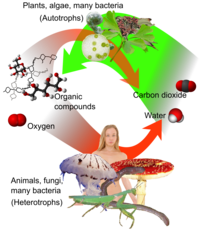
Photo from wikipedia
Chemically tagging stars back to common formation sites in the Milky Way and establishing a high level of chemical homogeneity in these chemically-tagged birth clusters is crucial for understanding the… Click to show full abstract
Chemically tagging stars back to common formation sites in the Milky Way and establishing a high level of chemical homogeneity in these chemically-tagged birth clusters is crucial for understanding the chemical and dynamical history of the Galactic disc. We constrain the intrinsic abundance scatter in 17 newly chemically-tagged dissolved birth clusters found in the APOGEE survey by modeling APOGEE spectra as a one-dimensional function of initial stellar mass, performing forward modeling of the observed stellar spectra, then comparing the data and simulations using Approximate Bayesian Computation. We exemplify this method with the well-known open clusters M67, NGC 6819, and NGC 6791. We study 15 elements measured by APOGEE and find that, in general, we are able to obtain very strong constraints on the intrinsic abundance scatter of most elements in the chemically-tagged birth clusters, with upper limits of ≲ 0.02 dex for C, ≲ 0.03 dex for O, Mn, and Fe, ≲ 0.04 dex for Si and Ni, and ≲ 0.05 dex for N, Mg, and Ca. While we find some evidence for a small amount of chemical inhomogeneity in the remaining elements (i.e. Na, Al, S, K, Ti, and V), we are still able to obtain similar or stronger limits compared to those found for open clusters, consistent with previous findings. By strongly constraining their level of chemical homogeneity, we can strengthen the statement that these groups of stars represent birth clusters, with promising implications for future chemical tagging studies.
Journal Title: Monthly Notices of the Royal Astronomical Society
Year Published: 2021
Link to full text (if available)
Share on Social Media: Sign Up to like & get
recommendations!